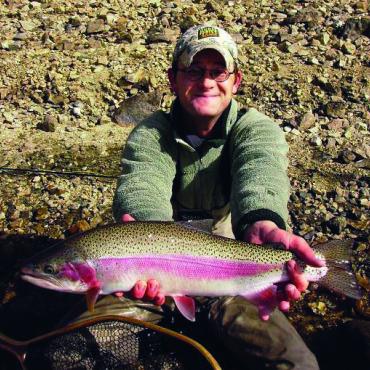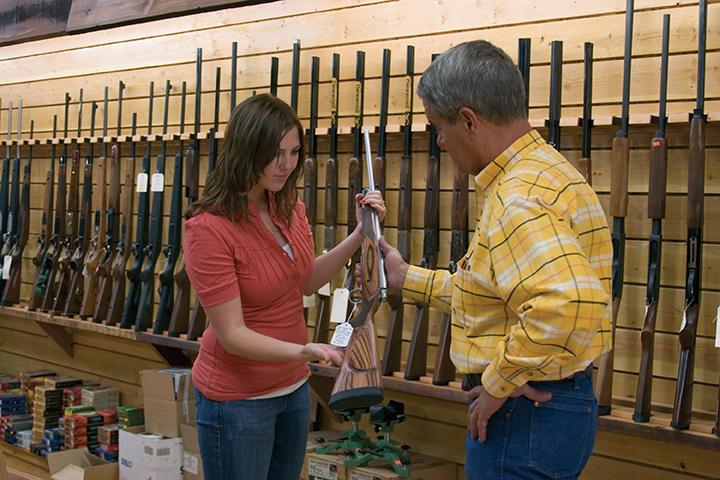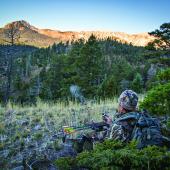Taking a Shot
One size doesn't fit all.
Back in the day when I was worked in the hunting/fishing department of the local Super-Duper Big-Box Mega-Lo Sportsman’s Mart, I was asked a plethora of sporting-arm-related questions. The most common was, “What’s the best rifle for all-around hunting in this area?” Considering the various species of big-game animals we have in Montana, the all-around best rifle is a pretty broad category indeed. Special permits aside, the main freezer-fillers are elk, mule deer, and whitetail deer. Therefore, one might suspect that the ideal rifle is one that will quickly and cleanly kill any one of these three.
That is essentially the theory; however, what works best for Dick might not work for Jane. So before buying yourself a shootin’ tool, it’s best to ask yourself some of these basic questions.
Which species of game am I going to be hunting?
Which caliber do I prefer for the game I will be pursuing?
How heavy do I want my rifle?
Should I buy a new or used rifle?
What type of scope do I want on my rifle?
What is my budget?
Information
The more you know about firearms, ballistics, optics, and the type of game you’ll be hunting, the easier it will be for you to buy the proper rifle with confidence. As always, an informed consumer is a happy consumer, and a rifle is a big investment. I highly recommend The Rifle Book, by Jack O’Connor. Even though slightly dated, this book could be considered the beginning gunner's bible, and it is actually fun to read. Other resources include American Hunting Rifles by Craig Boddington and Blue Book of Gun Values by S. P. Fjestad. These books, in conjunction with internet resources such as gunnersden.com and the various firearms manufacturers’ websites, should give you the necessary information to make a confident rifle choice.
Caliber
Making a broad-based, best-for-every-Tom-Dick-and-Mary rifle-caliber recommendation would be akin to saying that only one kind of beer is suitable to drink. I don’t believe that about beer or rifles. There are literally hundreds of centerfire rifle cartridges, and with the more recent advancements in short-magnum rounds, choices in hunting calibers seem to be more numerous that ever. The best advice I was ever given on rifle calibers was to pick the biggest one you are able to shoot comfortably. The same advice goes for the action of the rifle. Some people swear by single shots, while others are religious about bolt actions. The best choice for you is the one that will allow you to make the kill shot each and every time. An ideal way to try different rifle calibers and actions is to get some of your prospective hunting buddies together for a sight-in day. Have them loan you their rifles for a few shots, get a feel for how you like or dislike the different guns.
Weight
During the long push up that next ridge where the elk are most certain to be, rifles begin to somehow put on weight. This is a very important factor to consider if you are buying a rifle for a young hunter or happen to be in less-than-ideal physical condition at the start of the season. Many manufacturers offer youth or “featherweight” models in a number of popular calibers and styles. These guns are great even for the big-guy hunter looking to cut ounces for horse packing, or solo foot sojourns deep into the backcountry.
Stock material can also play a factor in rifle heft. Modern rifle stocks are usually made of wood or a synthetic composite material. Synthetic stocks can be slightly lighter than wood; however, that can increase recoil. Again this is where your comfort comes into play. A rifle should be like an extension of your body—if part of your body is too heavy, or hurts when you use it, the effectiveness becomes impaired.
New or Used
This can be a tricky labyrinth to navigate. You always get what you pay for, be it in product or service. Buy the best rifle you can afford. If the rifle appears new but is used, you may be buying someone else’s problems. Develop a good relationship with your rifle dealers—make sure they are hunters, too, not just shooters. Most reputable gun shops are very interested in keeping you happy, and they will do their best to get you your ideal rifle.
Optics
This is another area where you should buy the best product you can afford. There are two basic types of telescopic rifle scopes: fixed and variable power. Again, consult your gunsmith to match your rifle to the right scope for your hunting needs.
Accessories
As with most modern outdoor pursuits, accessories abound. Aside from scope covers and a good-quality sling, most accessories are designed to separate you from your cash. Many hunters use a bipod to assure a good rest when taking that all-important shot. However, a rifle fitted with a bipod will not fit in a saddle scabbard, and for the most part your backpack, jacket, a good stump, or log will serve the same purpose as a bipod.
Budget
Here is the real deciding factor on your rifle. Bear in mind that the difference between a pricey rifle and an economy model is often just stock material and finish. A good, quality hunting rifle with scope should not cost you more than $800. Again, buy the best you can afford, you will always be happy with it.
Rifle Resources
Successful hunters have many important folks behind them, and one of them is a skilled and trustworthy gunsmith. Not only can a trained gunsmith match and outfit you with a quality hunting firearm, he can also be consulted when things go wrong—and things will go wrong. Although most general rifle and shotgun maintenance can be done in the garage (cleaning, minor adjustments, stock and finish work, etc.), major adjustments including scope mounting, bore sighting, misfiring issues, or broken or damaged internal mechanisms should be handled or at least advised by a trained professional.
With a vast pool of firearms enthusiasts in Montana, a quality, trustworthy, and well-trained gunsmith is not hard to find. When consulting a gunsmith bear in mind that gunsmithing is an art form. Working with small, precision-machined components and mechanisms takes time. Three days before opening day may not be the optimal time for a tune-up. Know your rifle and scope, and shoot as often as you can so that any problems that may arise can be quickly addressed. The more educated you are about your hunting arm, the easier it will be for you and your gunsmith to communicate about any shooting issues you may have.
Here's a list of local gun shops and gunsmiths who can help:
Powder Horn (inside Schnee's)
35 E. Main, Bozeman
587-7373
Bob Ward's
3011 Max Ave., Bozeman
586-4381
Sportsman’s Warehouse
2214 Tschache Ln., Bozeman
586-0100
Shedhorn Sports
103 W. Main St., Ennis
682-4210
RW Outdoors
108 S. Main St., Sheridan
406-842-5271












